|
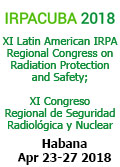
|
 |
|
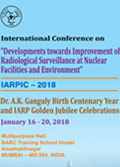 |
 |
|
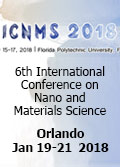
|
 |
|
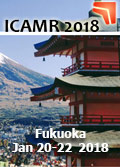
|
 |
|
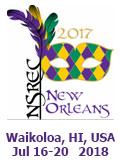
|
 |
| |
 |
| |
| |
|
|
|
|
Si no desea recibir mas este Boletín haga click aqui. |
|
|
|
|
|
|
|
|
|
|
|
|
|
|
|
 |
 |
 |
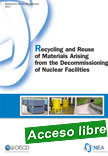 |
Recycling and Reuse of Materials Arising from the Decommissioning of Nuclear Facilities - A Report by the NEA Co-operative Programme on Decommissioning
Nuclear Energy Agency (NEA), 16/08/17, 69 p.
Large quantities of materials arising from the decommissioning of nuclear facilities are non-radioactive per se. An additional significant share of materials is of very low-level or low-level radioactivity and can, after having undergone treatment and a clearance process, be recycled and reused in a restricted or unrestricted way. |
Recycle and reuse options today provide valuable solutions to minimise radioactive waste from decommissioning and at the same time maximise the recovery of valuable materials. The NEA Co-operative Programme on Decommissioning (CPD) prepared this overview on the various approaches being undertaken by international and national organisations for the management of slightly contaminated material resulting from activities in the nuclear sector. The report draws on CPD member organisations’ experiences and practices related to recycling and reuse, which were gathered through an international survey. It provides information on improvements and changes in technologies, methodologies and regulations since the 1996 report on this subject, with the conclusions and recommendations taking into account 20 years of additional experience that will be useful for current and future practitioners. Case studies are provided to illustrate significant points of interest, for example in relation to scrap metals, concrete and soil.
Extraído de: http://www.oecd-nea.org/tools/publication?query=&div=&lang=&period=6m&sort=title&filter=1#p7310
|
 |
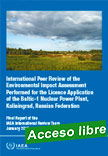 |
International Peer Review of the Environmental Impact Assessment Performed for the Licence Application of the Baltic-1 Nuclear Power Plant, Kaliningrad, Russian Federation
Final Report of the IAEA International Review Team January 2015
IAEA Non-serial Publications, 2017, 100 p.
The State Atomic Energy Corporation of the Russian Federation (ROSATOM) requested the services of the IAEA to conduct an international peer review of the environmental impact assessment for the Baltic-1 Nuclear Power Plant against the IAEA Safety Standards. The international expert group assessed radiation protection and monitoring, radioactive waste and the transport of used nuclear fuel in accordance with IAEA Safety Standards and the consensus view is presented in this publication. |
Extraído de: http://www-pub.iaea.org/books/IAEABooks/11145/International-Peer-Review-of-the-Environmental-Impact-Assessment-Performed-for-the-Licence-Application-of-the-Baltic-1-Nuclear-Power-Plant-
|
 |
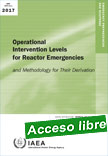 |
Operational Intervention Levels for Reactor Emergencies and Methodology for Their Derivation
IAEA Emergency Preparedness and Response, 2017, 160 p.
This publication seeks to assist IAEA Member States in meeting the requirement of para. 4.28(4) of the IAEA Safety Standards Series No. GSR Part 7, and contribute to the harmonization of national criteria for response actions (a need emphasized by the 55th and 56th IAEA General Conferences in resolutions GC(55)/RES/9 and GC(56)/RES/9), by providing Member States with: (a) default OIL values that can be used immediately in the response to an emergency due to severe conditions at an LWR or its spent fuel; (b) a detailed explanation of the methodology for deriving the default OIL values; (c) practical tools and recommendations on how to use the OILs; and (d) considerations for revising the default OIL values.
|
Extraído de: http://www-pub.iaea.org/MTCD/Publications/PDF/EPR_NPP_OILs_2017_web.pdf
|
 |
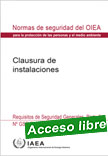 |
El objetivo de esta publicación es definir los requisitos de seguridad generales que deberán cumplirse durante la planificación de la clausura, la realización de los trabajos de clausura y la terminación de la autorización de clausura.
|
Extraído de: http://www-pub.iaea.org/MTCD/Publications/PDF/P1652_S_web.pdf
|
 |
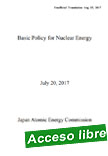 |
Basic Policy for Nuclear Energy
Japan Atomic Energy Commission, July 20, 2017, Unofficial Translation Aug 15, 2017, 21 p.
The research, development, and utilization of nuclear energy (hereinafter “nuclear energy use”) in Japan was started exclusively for peaceful purposes, on the premise the safety is secured and for the purpose of securing energy resources into the future and advancing scientific researches industrial development thereby contributing to the enhancement of the human welfare and national living standard nation’s livelihoods as stipulated by the Atomic Energy Basic Law of 1955 (Act No.186). |
In order to ensure the systematic implementation of national measures to achieve these goals, the Japan Atomic Energy Commission (JAEC), founded in 1956, had adopted “Long-term Program for Research, Development and Utilization of Nuclear Energy” (hereinafter “Longterm Program”) and “Framework for Nuclear Energy Policy” (hereinafter “Framework”) approximately every five years, ten times in total. The last framework was adopted in October 2005. Each framework was adopted as a plan for the succeeding decade in mind in view of the changed circumstances in and out of Japan.
Following the accident at Tokyo Electric Power Company’s Fukushima Daiichi Nuclear Power Station (hereinafter “Fukushima Accident”) in 2011, drastic reform of the JAEC was discussed during 2013, in view of the drastically changed environment surrounding nuclear energy. Since the subsequent reform, the JAEC has been performing its tasks resuming its original position of conducting nuclear energy administration in strictly democratic manner.
In the course of the review of the JAEC, it was decided not to formulate comprehensive and detailed plans such as the “Long-term Program” or “Framework.” The JAEC, instead, decided to adopt a set of broad guidelines titled “Basic Policy for Nuclear Energy” by overlooking entire nuclear energy use and from its own viewpoint that is based on the expert’s view and international lessons learned in consideration of its role to provide an overarching nuclear energy policy directions encompassing relevant government ministries and agencies while securing neutrality from those related organizations. This “Basic Policy”intends to serve as a compass to show long-term directions for government policy on nuclear energy use for the coming years.
Extraído de: http://www.aec.go.jp/jicst/NC/about/kettei/kettei170720_e.pdf/
|
 |
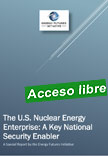
|
The U.S. Nuclear Energy Enterprise: A Key National Security Enabler
Energy Futures Initiative, August 2017, 38 p.
This report discusses the underpinnings for policies that would internalize the national security benefits of a robust nuclear enterprise, including generation from existing and new nuclear power plants and the associated and extensive supply chain. Both elements are under considerable stress and call for Federal response. |
Specifically, this report analyzes the key role played by the U.S. nuclear energy enterprise in meeting three national security imperatives: maintaining U.S. leadership in ensuring nuclear non-proliferation; supporting the U.S. nuclear Navy; and supporting the global strategic stability and deterrence value of nuclear weapons.
The report’s focus is the role of the nuclear energy enterprise as a key enabler of these objectives; it is not about the nuclear enterprise per se. The report includes an appendix that details the current state of the domestic nuclear energy enterprise for readers who want more information on this topic.
Extraído de: https://static1.squarespace.com/.../EFI+Nuclear+Report+FINAL+08.2017.pdf
|
 |
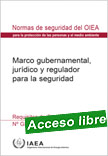 |
Marco gubernamental, jurídico y regulador para la seguridad
Colección de normas de seguridad del OIEA, 2017, 72 p.
El objetivo de la presente publicación de Requisitos de Seguridad es establecer los requisitos respecto del marco gubernamental, jurídico y regulador para la seguridad. El marco de seguridad ha de establecerse para toda la gama de instalaciones y actividades, desde la utilización de un número limitado de fuentes de radiación hasta un programa nucleoeléctrico.
|
No todos los requisitos de seguridad son pertinentes para todos los Estados; deben tenerse en cuenta las circunstancias reinantes en cada Estado y los riesgos radiológicos relacionados con sus instalaciones y actividades.
Extraído de: http://www-pub.iaea.org/MTCD/Publications/PDF/P1713_S_web.pdf
|
 |
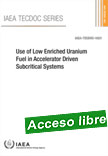 |
Use of Low Enriched Uranium Fuel in Accelerator Driven Subcritical Systems
IAEA TECDOC, 2017, 316 p..
This publication presents the results and conclusions of an international research collaboration devoted to gaining a better understanding of the physics of Accelerator Driven Subcritical Systems (ADS), with particular emphasis on using low enriched uranium (LEU) fuel. |
The publication contains information on nine ADS facilities, including descriptions of the hardware deployed, experiments conducted, computational resources and procedures used in the analyses, principal results obtained, and conclusions drawn from the knowledge gained as a consequence of this work. It is intended to provide information for users of ADS systems and those involved in the design of new ADS facilities to use LEU fuel and in the conversion of some existing facilities from using highly enriched Uranium (HEU) to LEU.
Extraído de: http://www-pub.iaea.org/books/IAEABooks/12224/Use-of-Low-Enriched-Uranium-Fuel-in-Accelerator-Driven-Subcritical-Systems
|
 |
|
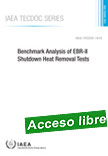
|
Benchmark Analysis of EBR-II Shutdown Heat Removal Tests
IAEA TECDOC, 2017, 480 p.
This publication presents the results and main achievements of an IAEA coordinated research project to verify and validate system and safety codes used in the analyses of liquid metal thermal hydraulics and neutronics phenomena in sodium cooled fast reactors. The publication will be of use to the researchers and professionals currently working on relevant fast reactors programmes.
|
In addition, it is intended to support the training of the next generation of analysts and designers through international benchmark exercises
Extraído de: http://www-pub.iaea.org/books/IAEABooks/12247/Benchmark-Analysis-of-EBR-II-Shutdown-Heat-Removal-Tests
|
 |
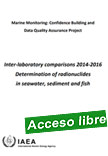 |
Marine Monitoring: Confidence Building and Data Quality Assurance Project - Inter-laboratory comparisons 2014-2016 Determination of radionuclides in seawater, sediment and fish
IAEA Operating Experience with Nuclear Power Stations in Member States IAEA Environment Laboratories, July 2017, 50 p.
With a view to assisting the Government of Japan in its objective of making the Sea Area Monitoring Plan comprehensive, credible and transparent, the IAEA, through its Environment Laboratories, is helping to ensure the high quality of data and to prove the comparability of the results.
|
A 3-year project “Marine Monitoring: Confidence Building and Data Quality Assurance” (2014 – 2016) was initiated as a follow-up activity to recommendations made on marine radioactivity monitoring in a report issued by the IAEA in 2013 (https://www.iaea.org/sites/default/files/final_report120214.pdf) related to the decommissioning of the Fukushima Daiichi Nuclear Power Station, which reviewed Japan's efforts to plan and implement the decommissioning of the plant. Six interlaboratory comparisons (ILCs) and three proficiency tests (PTs) were organized during this project. The PT results published so far can be accessed on the IAEA web pages. This report focuses on ILCs, which are a standard means for laboratories to assess the quality of their measurement results as compared to that of other participating laboratories and identify any potentially needed improvements. Within this project, joint sampling campaigns to collect seawater, sediment and fish samples were undertaken. The resulting samples were subsequently analysed in each participating laboratory and the results were compared.
Extraído de: https://www.iaea.org/sites/default/files/project-report270717.pdf
|
 |
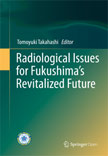 |
Radiological Issues for Fukushima’s Revitalized Future
Springer, 2016, 232 p.
This book overviews environmental issues 4 years after the Fukushima nuclear accident, covering a wide range of areas related to radiation and radioactivity. The topics discussed are necessary to make clear the relationship between the results of research and Fukushima’s revitalized future.
|
The chapters are divided into four parts: Part 1 presents the identification of radionuclides in soil and migration of radionuclides in the terrestrial environment; Part 2 describes the safety decontamination system and treatment of radioactive waste; Part 3 explains the development of the system of measurement of environmental radiation and evaluation of external exposure; and Part 4 discusses the identification of radionuclides in farm products, control of root uptake, identification of decreasing radionuclides by food processing, and evaluation of internal exposure.
Since the accident at the Tokyo Electric Power Company's Fukushima Daiichi nuclear power station in 2011, gradual steps have been taken toward environmental recovery in the area. However, there are still many issues that need to be tackled in order to achieve the full revitalization of Fukushima. These issues encompass many different disciplines such as economics, psychology, and sociology. In this kind of situation, the role of science in relation to radiation and radioactivity is especially important. This book aims to contribute to planning countermeasures against nuclear disasters in the future. It will be of particular interest to governmental officials who are engaged with the Fukushima nuclear accident; researchers, including those in international sectors, who are interested in radiological issues; and those who need comprehensive and reliable information about the Fukushima accident.
Extraído de:http://www.springer.com/us/book/9784431558477
|
 |
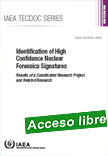 |
Identification of High Confidence Nuclear Forensics Signatures - Results of a Coordinated Research Project and Related Research
IAEA TECDOC, 2017, 128 p.
This publication reflects recent research activities undertaken to identify of important nuclear forensics signatures, facilitate their accurate measurement and prediction, elucidate the controls over the incorporation and persistence of nuclear forensic signatures across the nuclear fuel cycle, and advance how signatures can be used as part of a nuclear forensic examination to support law enforcement investigations or nuclear security vulnerability assessments.
|
A priority was resolving geologic signatures of uranium ores and ore concentrates from nuclear fuel cycle processing signatures in nuclear fuels and irradiated materials. The results published here may assist in the development of an identification scheme for nuclear and other radioactive materials incorporating knowledge bases utilized by subject matter experts (SMEs). The findings from the CRP complement additional results included here derivative from individual nuclear forensic research contracts with investigators from the Russian Federation. This publication hopes to inform awareness and understanding of nuclear forensics as well as the importance of the science of signatures as they contribute to robust nuclear forensic findings.
Extraído de: http://www-pub.iaea.org/MTCD/Publications/PDF/TE-1820_web.pdf
|
 |
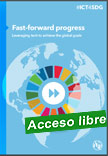 |
Fast-forward Progress: Leveraging Tech to Achieve the Global Goals
International Telecommunication Union (ITU), 2017, 156 p.
The High-Level Political Forum (HLPF) on Sustainable Development is taking place in New York from July 10th to 19th to monitor the progress of the 2030 Agenda. The “Fast-Forward Progress: Leveraging Tech to Achieve the Global Goals” report is a contribution from the United Nations system to this year’s HLPF. The report was officially launched at HLPF’s special side event in Geneva.
|
What if you could ask the heads of today’s most prominent international organizations how they would use tech to transform our world and better the lives of hundreds of millions?
That’s just what we did. In the new publication “Fast-Forward Progress: Leveraging Tech to Achieve the Global Goals”, the leaders of 17 United Nations agencies and international organizations each select one of the 17 Sustainable Development Goals (SDGs) from the 2030 Agenda for Sustainable Development, and tell us how information and communication technologies (ICTs) could help them to achieve these goals.
The SDGs are ambitious and include ending poverty and hunger, achieving gender equality, and reducing inequality.
This report is about a very complex and fast-changing world, it is about our children, our food, our air, our cities, our oceans. It is about trade, migration, crime, education, work and justice.
Extraído de: http://news.itu.int/united-nations-fast-forward-progress-report/
|
 |
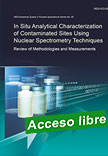 |
In Situ Analytical Characterization of Contaminated Sites Using Nuclear Spectrometry Techniques - Review of Methodologies and Measurements
IAEA Analytical Quality in Nuclear Applications Series, 2017, 204 p
Past and current human activities can result in the contamination of sites by radionuclides and heavy metals. The sources of contamination are various. The most important sources for radionuclide release include global fallout from nuclear testing, nuclear and radiological accidents, waste production from nuclear facilities, and activities involving naturally occurring radioactive material (NORM).
|
Contamination of the environment by heavy metals mainly originates from industrial applications and mineralogical background concentration.
Contamination of sites by radionuclides and heavy metals can present a risk to people and the environment. Therefore, the estimation of the contamination level and the identification of the source constitute important information for the national authorities with the responsibility to protect people and the environment from adverse health effects.
In situ analytical techniques based on nuclear spectrometry are important tools for the characterization of contaminated sites. Much progress has been made in the design and implementation of portable systems for efficient and effective monitoring of radioactivity and heavy metals in the environment directly on-site. Accordingly, the IAEA organized a Technical Meeting to review the current status and trends of various applications of in situ nuclear spectrometry techniques for analytical characterization of contaminated sites and to support Member States in their national environmental monitoring programmes applying portable instrumentation.
This publication represents a comprehensive review of the in situ gamma ray spectrometry and field portable X ray fluorescence analysis techniques for the characterization of contaminated sites. It includes papers on the use of these techniques, which provide useful background information for conducting similar studies, in the following Member States: Argentina, Australia, Brazil, Czech Republic, Egypt, France, Greece, Hungary, Italy, Lithuania, Montenegro, Spain, United States of America and Uruguay.
.
Extraído de: http://www-pub.iaea.org/MTCD/Publications/PDF/AQ-49_web.pdf |
| |
|
|
| |
| |
|
|
| |
| |
|
|
| |
| |
|
|
|
|
|
|
|
